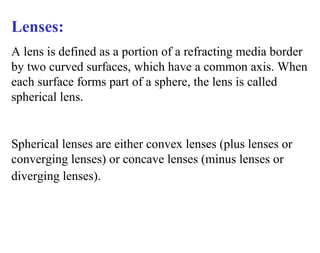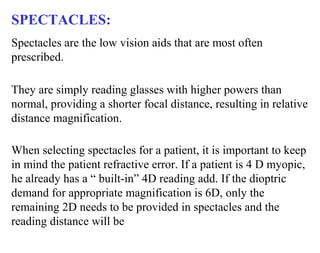1. Lenses can be convex or concave, with convex lenses converging light and causing magnification.
2. The power of a lens is determined by its focal length, with shorter focal lengths indicating higher powers. Spectacles and magnifiers use convex lenses of varying powers for low vision needs.
3. Telescopes use combinations of convex and concave lenses to provide angular magnification without changing vergence. Galilean telescopes have a positive objective lens and negative eyepiece, producing an erect image, while Keplerian telescopes have two positive lenses and an inverted image.



















